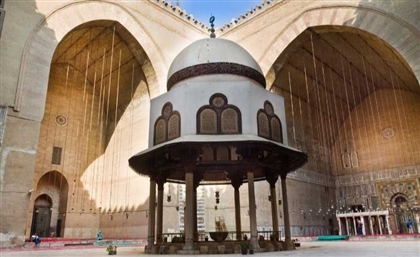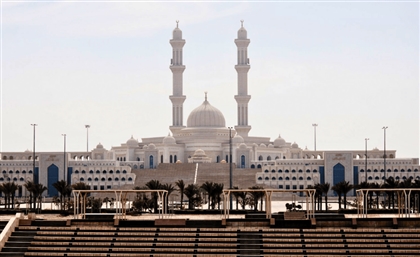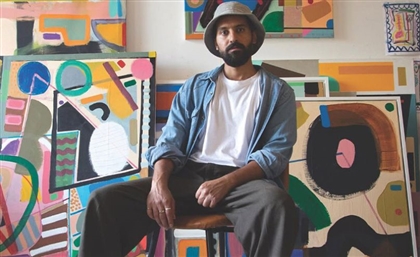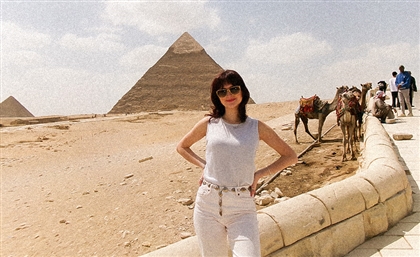From the Ornate to the Contemporary: Looking up at the Domes of Egypt
We look up at the domes of Egyptian mosques that range from the 8th century up to the sustainable designs of the 21st century.
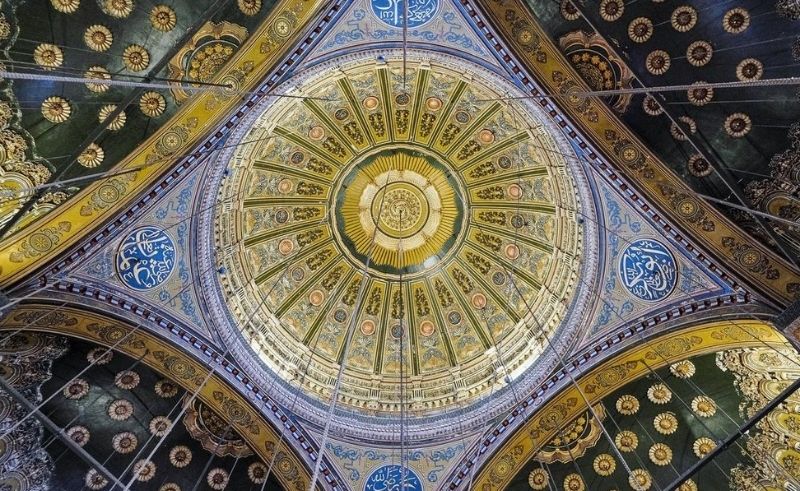
There are plenty of reasons to visit the mosques of Egypt. Aside from spiritual practices - which in fact plays a major role in the formulating their designs both functionally and aesthetically - there is a visual experience to be had in them. Such experiences are often difficult to pinpoint to one sole reason. While there’s plenty to discuss, for now we’re looking up at the domes of Egypt. After all, verticality is one of the main pillars of Islamic architecture, enabling oceans of colourfully detailed art that varied through the ages. We’ve compiled a list that showcases a sample of those domes, from the Ayyubid dynasty, to a rather contemporary design created as recently as 2019.
Mausoleum of Imam Al Shafi’i
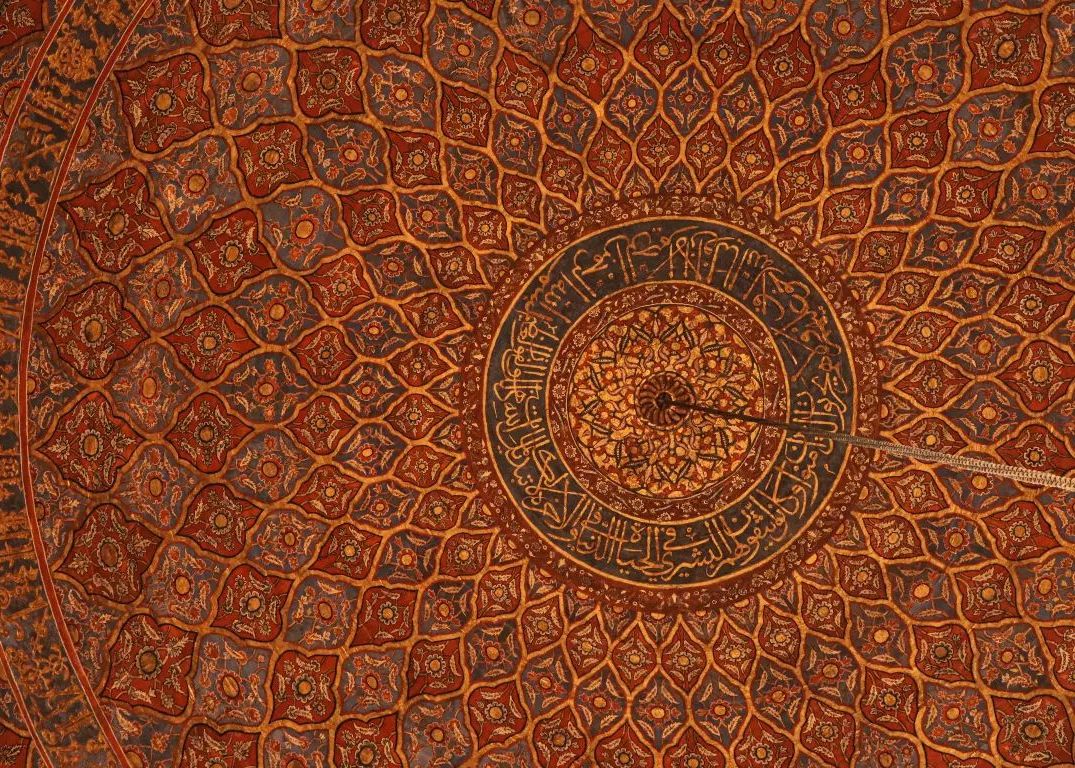 Going a bit further back in time with this masterpiece, this mausoleum was constructed under the fourth Ayyubid sultan of Egypt, Al Malik Al Kamil, between 1218 and 1238. Its dome is topped with an iconic copper boat that was carried over from the early Fatimid dynasty to be filled with birdseed. Because why have a copper boat on top of one of the highest buildings of its time, if not to leave a treat for the pigeons? Its interior followed the same spirit of giving, only this time it’s treating us to seemingly endless display of aesthetics instead. The round shape has an Andalusian exterior, and the carved colonettes have an ocean of ornaments painted red on the inside along with Ayyubid-style muqarnas.
Going a bit further back in time with this masterpiece, this mausoleum was constructed under the fourth Ayyubid sultan of Egypt, Al Malik Al Kamil, between 1218 and 1238. Its dome is topped with an iconic copper boat that was carried over from the early Fatimid dynasty to be filled with birdseed. Because why have a copper boat on top of one of the highest buildings of its time, if not to leave a treat for the pigeons? Its interior followed the same spirit of giving, only this time it’s treating us to seemingly endless display of aesthetics instead. The round shape has an Andalusian exterior, and the carved colonettes have an ocean of ornaments painted red on the inside along with Ayyubid-style muqarnas.
Ablution Fountain of Sultan Barquq Mosque
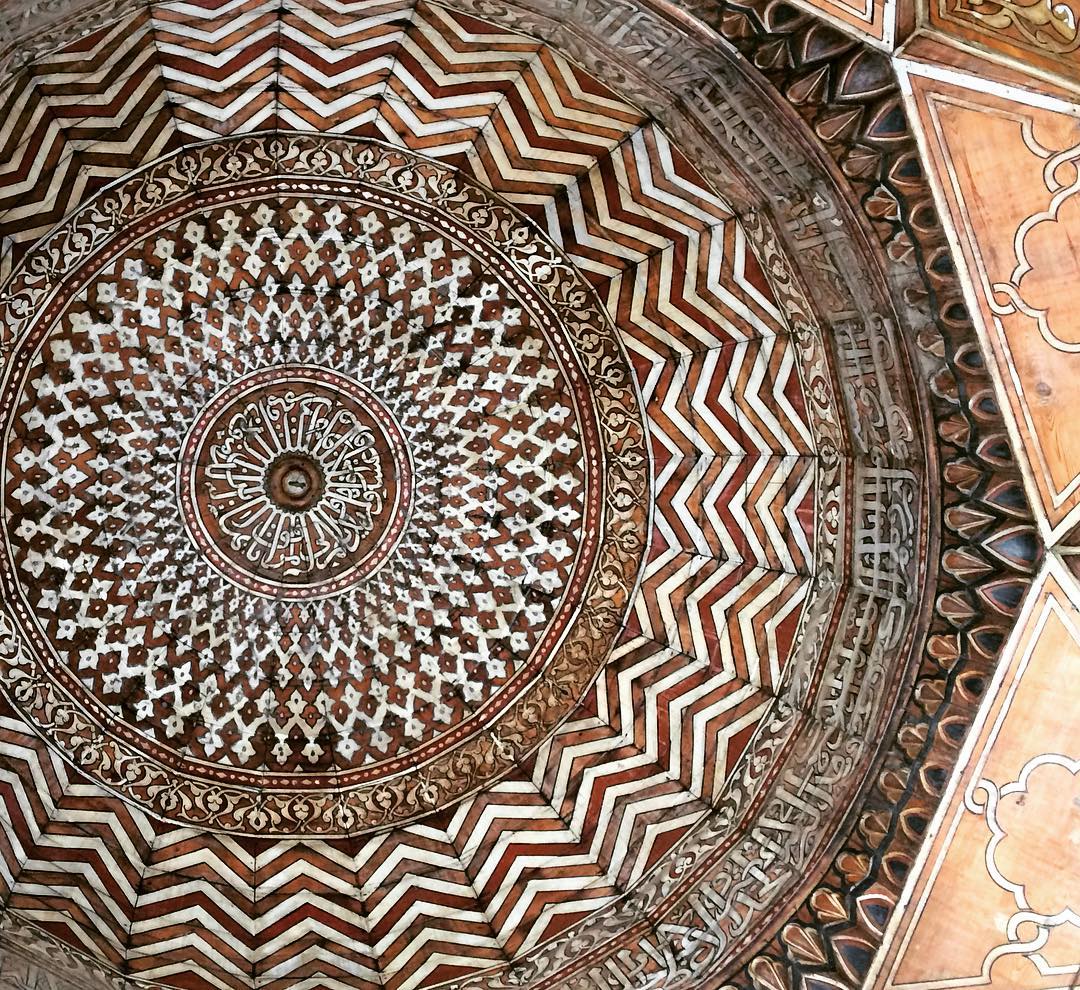 The Mosque-Madrassa of Sultan Barquq is one of the most visually enlightening destinations in Islamic Cairo. While the decorated ceiling doesn’t shy to dazzle, we’re here to look at domes, such as the dome in its ablution fountain. Yes, that relatively smaller structure in the middle of its massive courtyard that is meant to be used to rinse one’s body with water. Between 1384 and 1386, as the complex was constructed, somehow the master craftsmen of the time managed to squeeze in intense detailing within this dome.
The Mosque-Madrassa of Sultan Barquq is one of the most visually enlightening destinations in Islamic Cairo. While the decorated ceiling doesn’t shy to dazzle, we’re here to look at domes, such as the dome in its ablution fountain. Yes, that relatively smaller structure in the middle of its massive courtyard that is meant to be used to rinse one’s body with water. Between 1384 and 1386, as the complex was constructed, somehow the master craftsmen of the time managed to squeeze in intense detailing within this dome.
Khanqah of Faraj Ibn Barquq
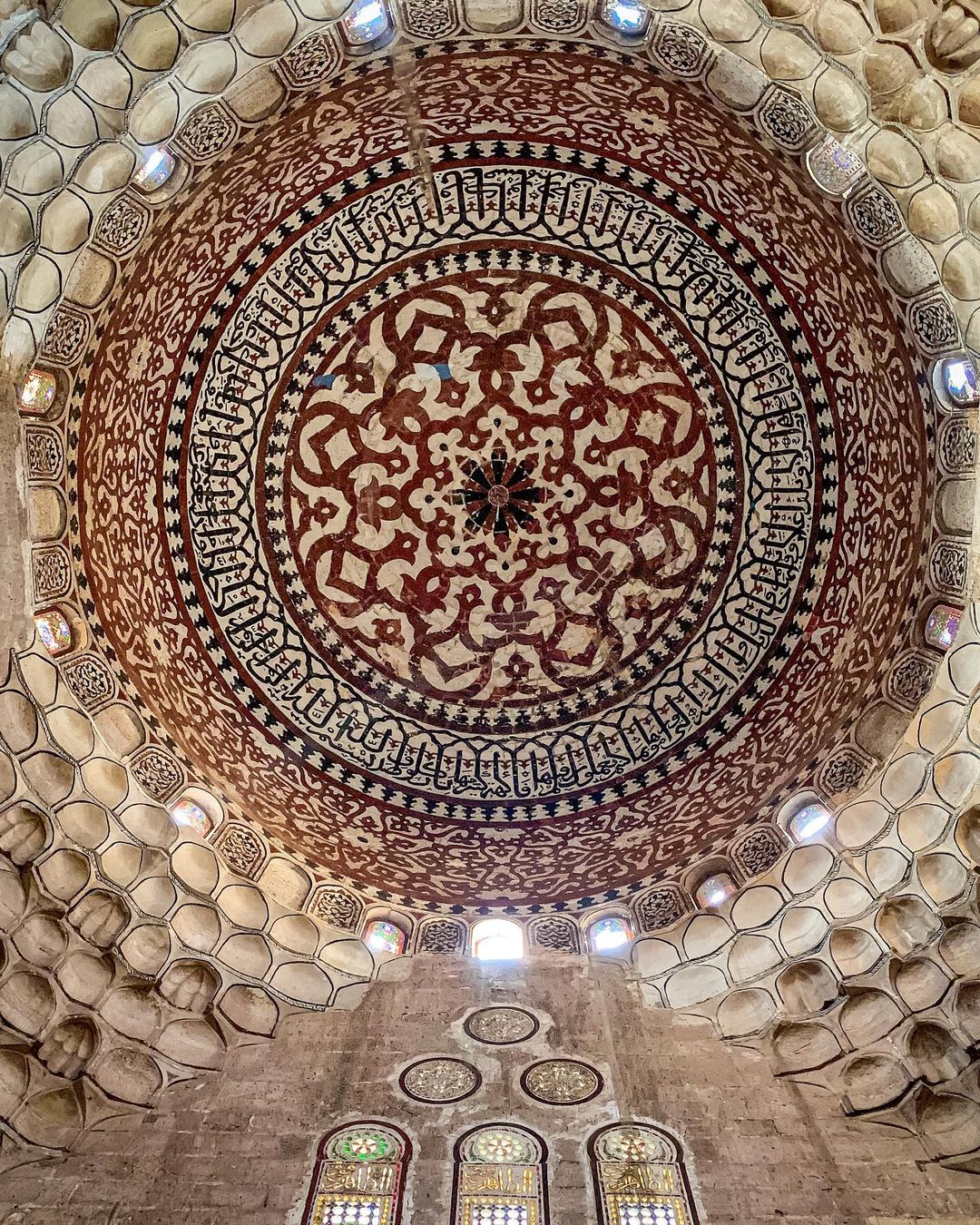 From one small feature of Sultan Barquq’s mosque to the funerary complex of his son. The funerary Khanqah of Sultan Faraj Ibn Barquq was built between 1400 and 1411 in the Northern Cemetery. The large stone domes of the mausoleums present within the complex represented a key point in the development of Mamluk architecture and engineering. They are the earliest large stone domes in Cairo, as large domes were previously made of wood. The northern mausoleum contains the tombs of Sultan Barquq and his son Sultan Faraj. The southern mausoleum, pictured above, was dedicated to their female relatives and decorated with warm colours giving off fervourness and delicacy at once.
From one small feature of Sultan Barquq’s mosque to the funerary complex of his son. The funerary Khanqah of Sultan Faraj Ibn Barquq was built between 1400 and 1411 in the Northern Cemetery. The large stone domes of the mausoleums present within the complex represented a key point in the development of Mamluk architecture and engineering. They are the earliest large stone domes in Cairo, as large domes were previously made of wood. The northern mausoleum contains the tombs of Sultan Barquq and his son Sultan Faraj. The southern mausoleum, pictured above, was dedicated to their female relatives and decorated with warm colours giving off fervourness and delicacy at once.
Mosque of Abu Al Dahab
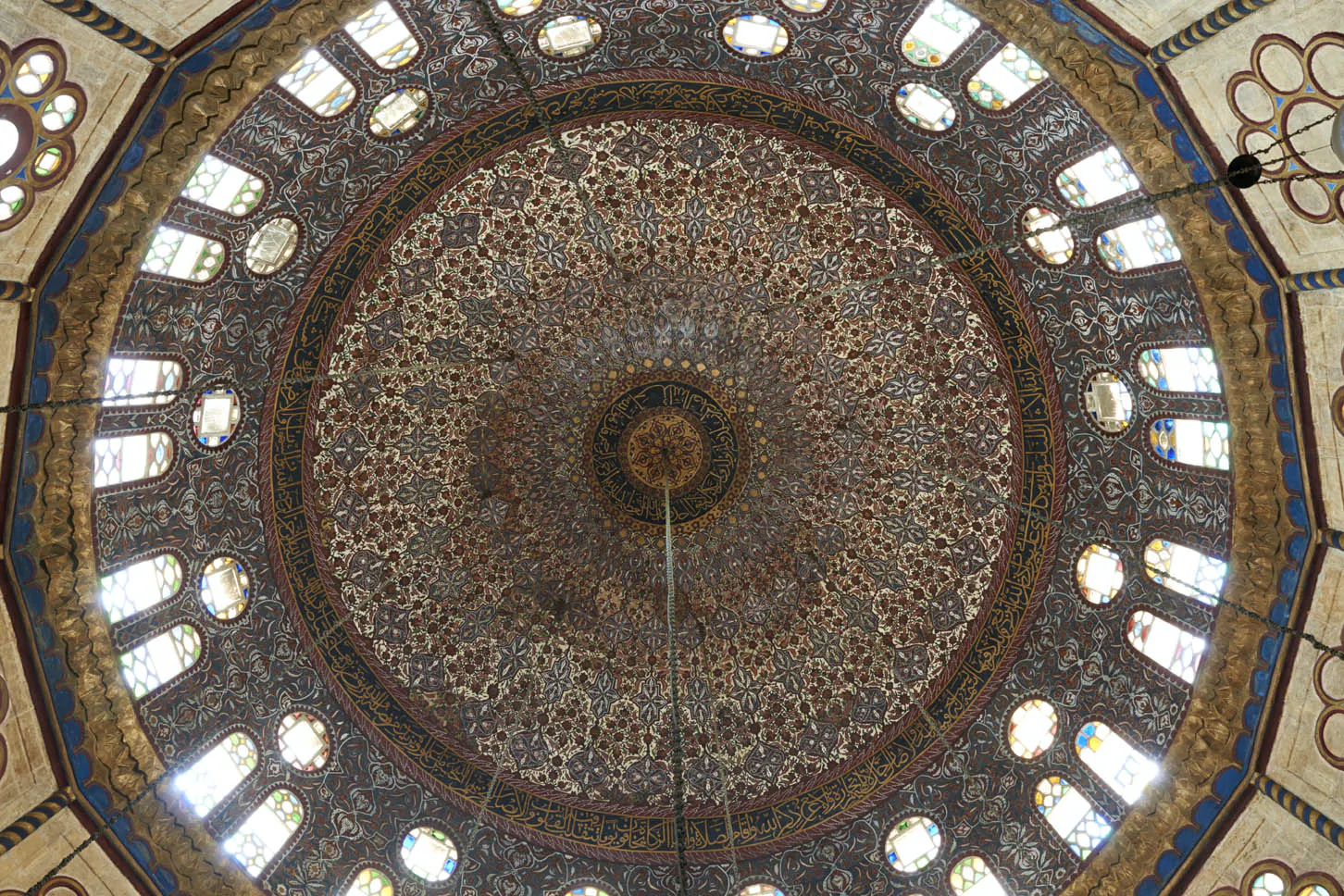 Completed in 1774, this mosque was commissioned by Muhammed Bey Abu Al Dahab, a Mamluk acting as the ruler of Ottoman Egypt. Its close proximity to Al Azhar Mosque in the heart of mediaeval Cairo resulted in many Mamluk influences, with its large dome surrounded on three sides (except that of the Qibla) by an exterior portico covered by smaller domes. On the inside, it has squinches at its corners and is painted with Ottoman-style arabesques and motifs. The drum is pierced by two tiers of windows, the lower consisting of eight small, round windows around a larger round window, and the upper has a more traditional Mamluk arrangement of two arched windows topped by a round one. In short, it’s a spectacle.
Completed in 1774, this mosque was commissioned by Muhammed Bey Abu Al Dahab, a Mamluk acting as the ruler of Ottoman Egypt. Its close proximity to Al Azhar Mosque in the heart of mediaeval Cairo resulted in many Mamluk influences, with its large dome surrounded on three sides (except that of the Qibla) by an exterior portico covered by smaller domes. On the inside, it has squinches at its corners and is painted with Ottoman-style arabesques and motifs. The drum is pierced by two tiers of windows, the lower consisting of eight small, round windows around a larger round window, and the upper has a more traditional Mamluk arrangement of two arched windows topped by a round one. In short, it’s a spectacle.
Mosque of Muhammed Ali
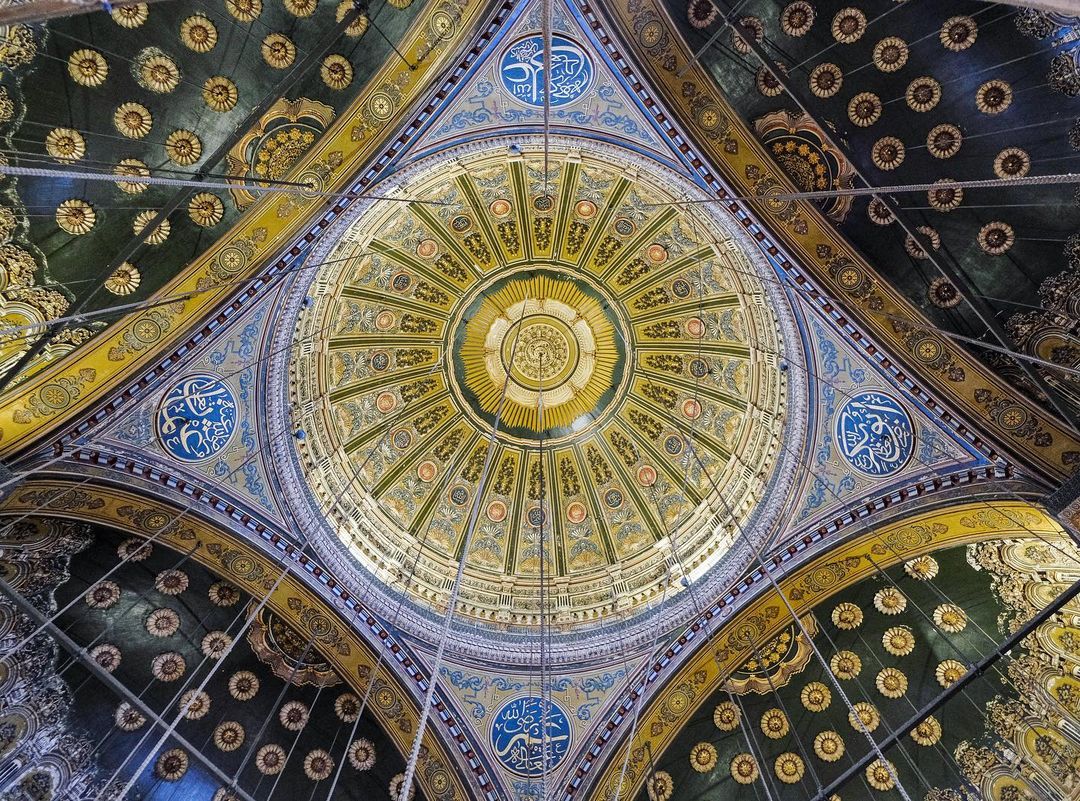 Iconic on the outside, iconic on the inside. Muhammed Ali chose to build his mosque between 1830 and 1848 entirely following the Ottoman style, with the main central dome - 21 metres wide - surrounded by four small semicircular domes, and covered with reliefs that mark its four corners.
Iconic on the outside, iconic on the inside. Muhammed Ali chose to build his mosque between 1830 and 1848 entirely following the Ottoman style, with the main central dome - 21 metres wide - surrounded by four small semicircular domes, and covered with reliefs that mark its four corners.
Mausoleum of Khedive Tawfiq
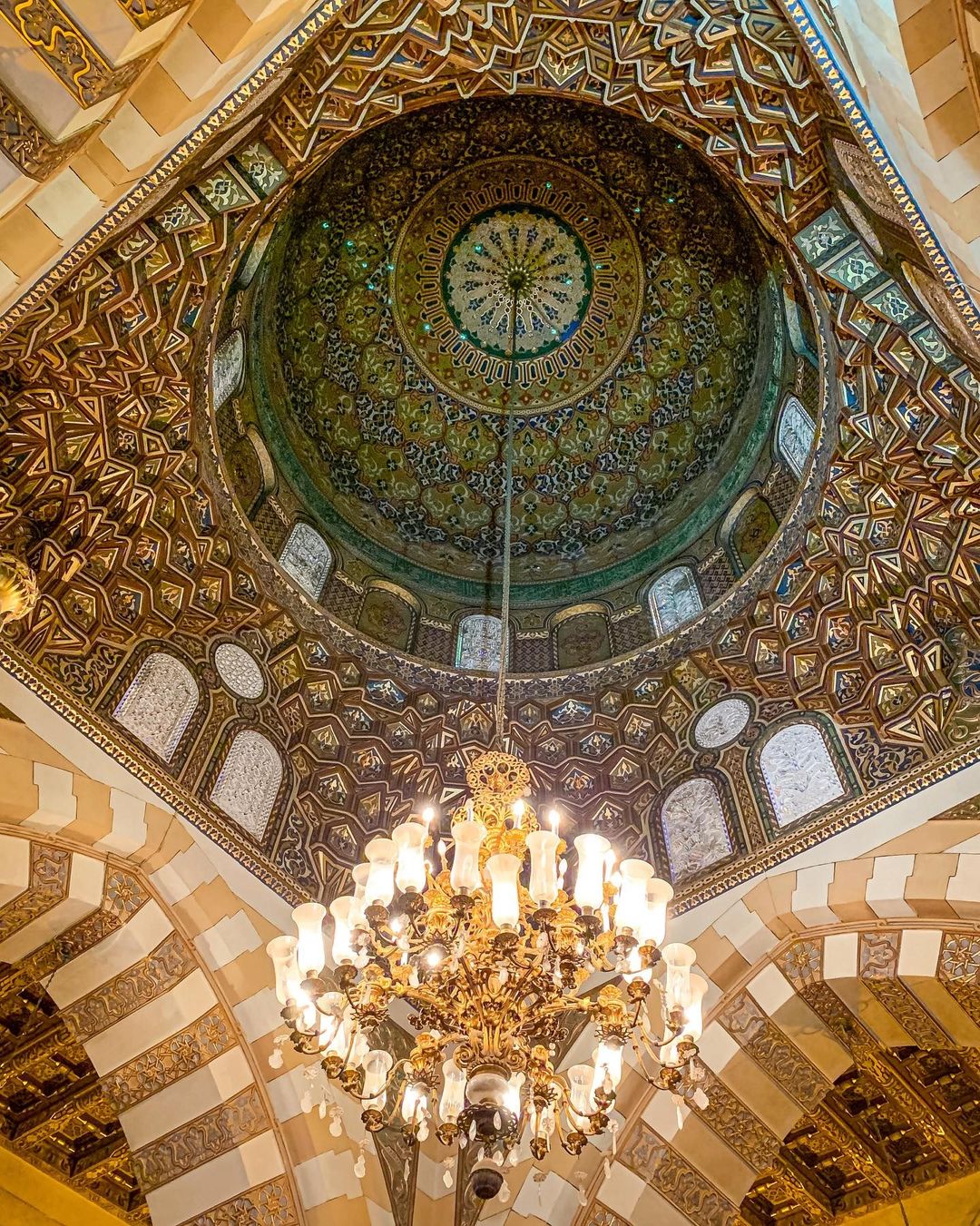 Qubbat Afandina, Arabic for ‘The Dome of Our Sir’, tops a 19th century monument on the eastern edge of the Northern Cemetery of Cairo’s Mamluk Necropoli. It is one of the many ornate architectural elements that make up the mausoleum which was built in 1894 by Khedive Abbas II in memory of his father. The design - which was formulated and executed by Dimitrius Fabricius Pasha, the Khedival royal court architect – is predominantly Neo-Mamluk with hints of Ottoman influences. Then again, most of this style is reminiscent of the previous dynasty. Geometric muqarnas decorate the structural pendentives transitioning the square plan into the circular dome by easing off its weight distribution.
Qubbat Afandina, Arabic for ‘The Dome of Our Sir’, tops a 19th century monument on the eastern edge of the Northern Cemetery of Cairo’s Mamluk Necropoli. It is one of the many ornate architectural elements that make up the mausoleum which was built in 1894 by Khedive Abbas II in memory of his father. The design - which was formulated and executed by Dimitrius Fabricius Pasha, the Khedival royal court architect – is predominantly Neo-Mamluk with hints of Ottoman influences. Then again, most of this style is reminiscent of the previous dynasty. Geometric muqarnas decorate the structural pendentives transitioning the square plan into the circular dome by easing off its weight distribution.
Mausoleum of Shafaq Nur Hanim
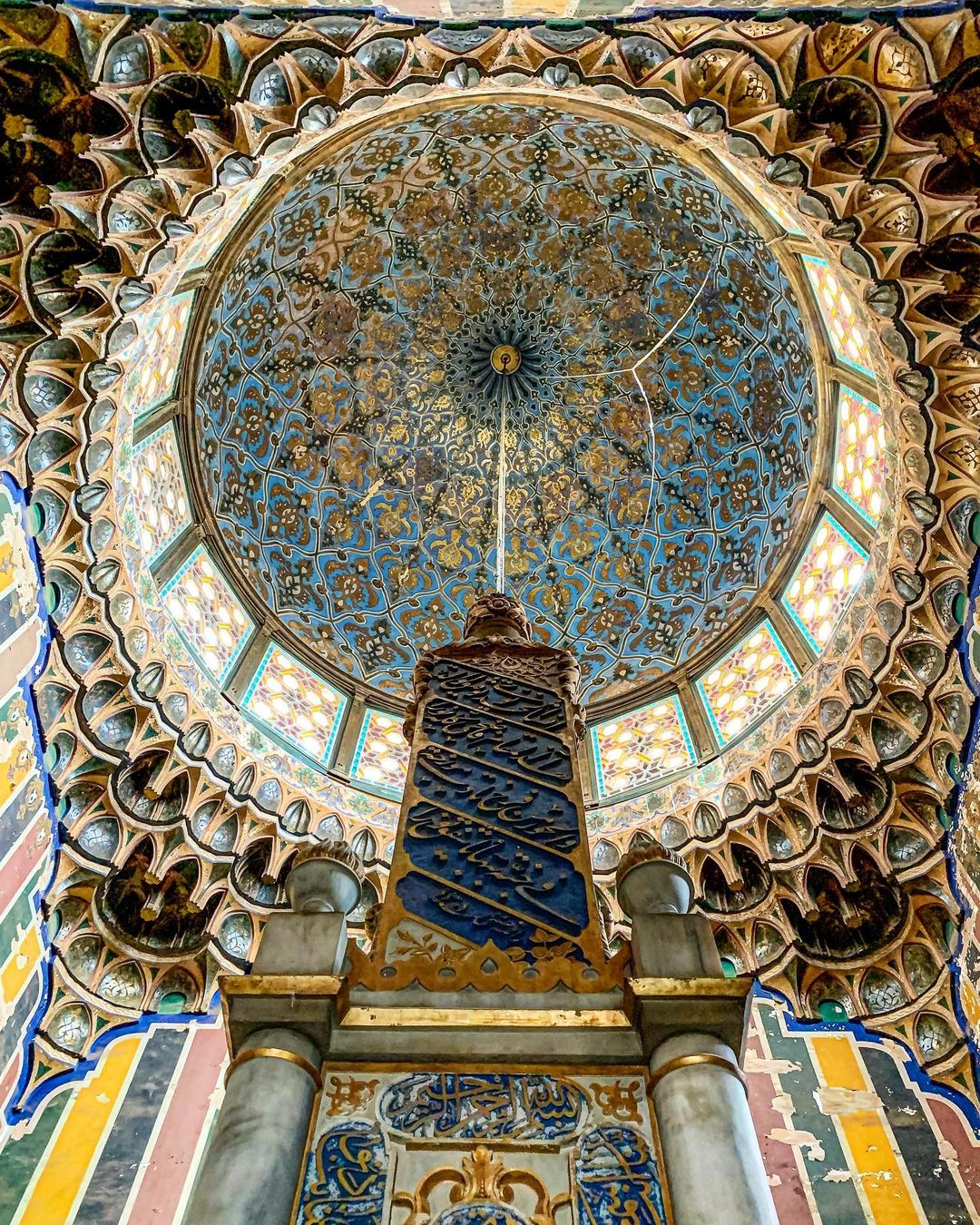 Located at Hosh El Basha, Arabic for ‘Courtyard of the Pasha’, which hosts the royal family of Muhammed Ali Pasha in the Southern Cemetery, this dome is glittering with gold and blue stonework and stuccos. At times referred to as ‘The Dome of the Pasha’, its beauty certainly lies in its rich colours and gilded carvings.
Located at Hosh El Basha, Arabic for ‘Courtyard of the Pasha’, which hosts the royal family of Muhammed Ali Pasha in the Southern Cemetery, this dome is glittering with gold and blue stonework and stuccos. At times referred to as ‘The Dome of the Pasha’, its beauty certainly lies in its rich colours and gilded carvings.
Al Rifa’i Mosque
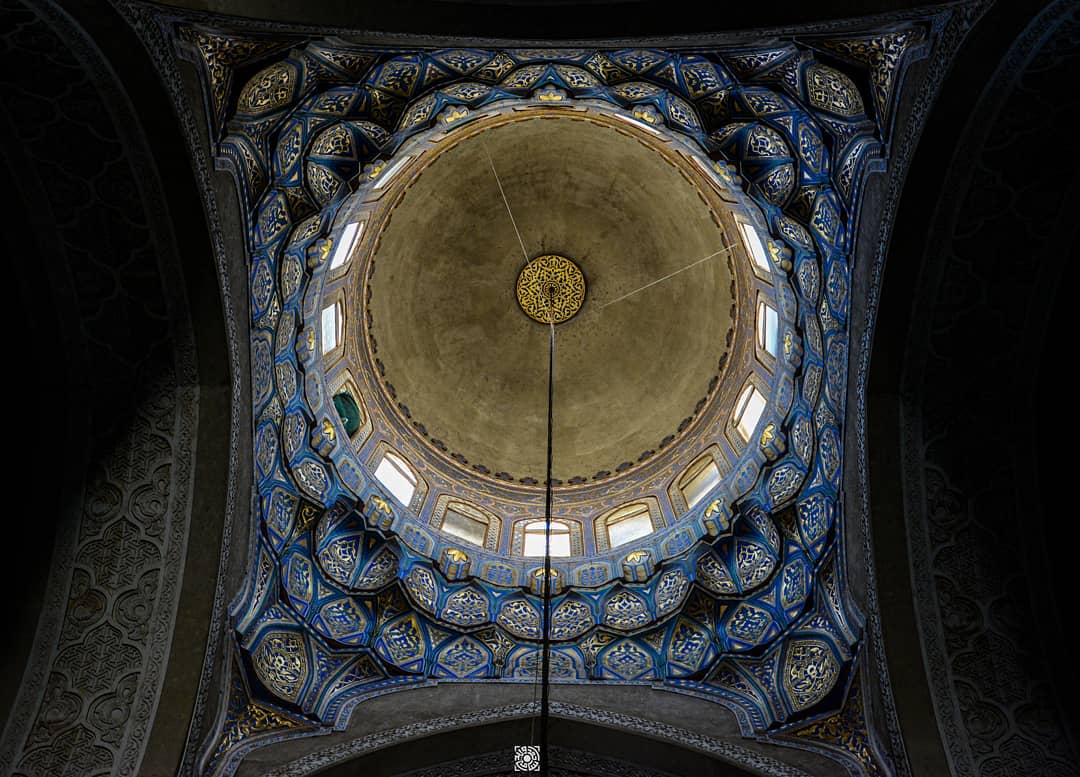 Few mosques are as recognizable as this one and the one opposing it. Within its calm yet ornate interior, the dome features stuccos, blue, gilded ornaments reflecting the spiritual calmness of the mosque which was built in two phases between 1869 and 1912. Its style came from the Mamluk period, while the rest of the mosque is an architectural story of its own. This dome is but the calmest of its roaring visuals.
Few mosques are as recognizable as this one and the one opposing it. Within its calm yet ornate interior, the dome features stuccos, blue, gilded ornaments reflecting the spiritual calmness of the mosque which was built in two phases between 1869 and 1912. Its style came from the Mamluk period, while the rest of the mosque is an architectural story of its own. This dome is but the calmest of its roaring visuals.
Basuna Mosque
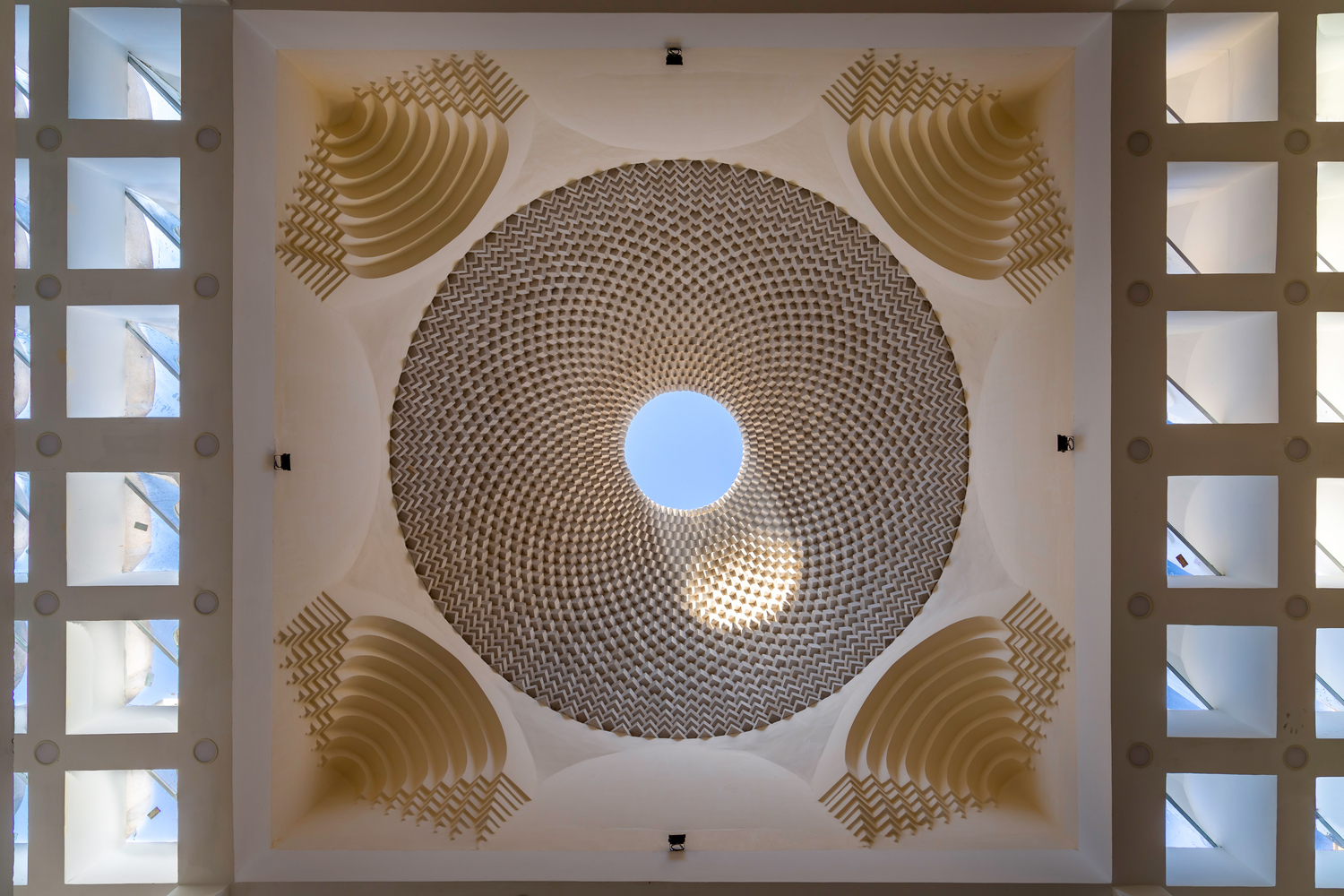 From the ornate and ancient, to the contemporary and sustainable. Located in the arid village of Basuna, Sohag, this tranquil, contemporary mosque was designed by Dar Arafa Architects in 2019, over a century after the latest of any one of the other mosques on this list. The main challenge faced here was the climate. Throughout the design, the architects ensured that there were plenty of openings at calculated distances that ensured high-altitude Northern breeze filtered into the mosque. The dome was made of lightweight blocks made of sand, lime and air. An ingeniously light material that decreased the building’s own weight and introduced an original aesthetics.
From the ornate and ancient, to the contemporary and sustainable. Located in the arid village of Basuna, Sohag, this tranquil, contemporary mosque was designed by Dar Arafa Architects in 2019, over a century after the latest of any one of the other mosques on this list. The main challenge faced here was the climate. Throughout the design, the architects ensured that there were plenty of openings at calculated distances that ensured high-altitude Northern breeze filtered into the mosque. The dome was made of lightweight blocks made of sand, lime and air. An ingeniously light material that decreased the building’s own weight and introduced an original aesthetics.
By employing a simple staggered tessellation, Dar Arafa ensured us that despite the age of dazzling ornaments came to an end, the country of a thousand minarets and domes still has minds coming up with contemporary ways of creating beautiful sights. Here, they did so with a sustainable twist.
Trending This Week
-
Dec 27, 2025








